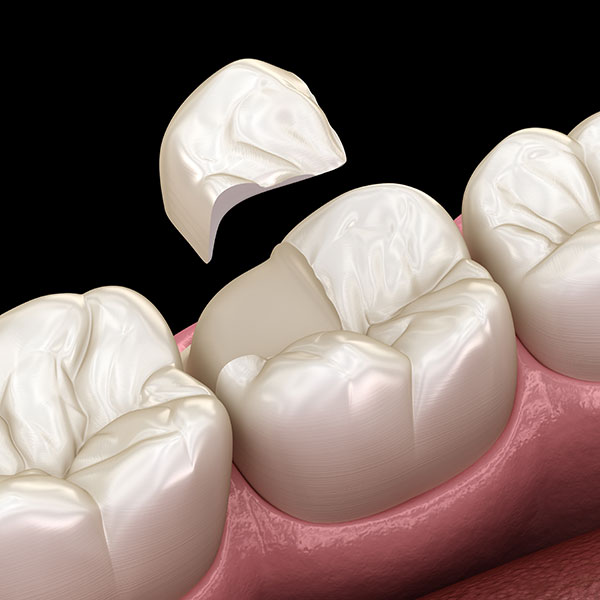What Are Onlays?
For restoring teeth, the dental professionals at Brook Trout Dental have many treatment options at their disposal, including onlays. It’s natural to have questions about what onlays are, what differentiates them from inlays, and what to expect if your dentist recommends onlays.
Onlays repair decayed or damaged teeth. Dental professionals position them over the cusp of the tooth undergoing treatment (cusps are the elevated parts of a tooth’s surface.) Onlay installation also places material inside the tooth, filling empty space. The onlays themselves are solid. They consist of gold, resin, porcelain, or composite material.
How Are Onlays Different from Other Treatments?
Among the other treatment options for degraded teeth are inlays, fillings, and crowns. Inlays focus on treating people in Casper whose cavities haven’t moved past the grooves of the teeth. They repair the interior of the tooth but do not repair the chewing surface, meaning inlays focus on less advanced cases of damage and decay than do onlays.
Otherwise, on the spectrum of basic to highly involved procedures, onlays are a moderate treatment. They can assist teeth that are too damaged for a filling to be viable, but they require less invasive dental work than crowns do.
What Should I Expect from an Onlay Procedure?
Often, the installation of onlays requires two appointments. At the first, you’ll receive a temporary onlay, and at the second, you’ll receive your permanent one.
During the initial visit, we will apply a local anesthetic and then take out the unhealthy portion of the tooth. To help create a good fit for your permanent onlay, they’ll also make an impression, which will go to a laboratory that manufactures the permanent version. In the meantime, you’ll receive a temporary onlay.
At the second visit, you can expect the provider to replace the temporary version with the permanent onlay, cleaning the tooth in between. They’ll check to ensure the permanent onlay is a good fit, adhere it to the tooth and touch it up to help it blend in with your other teeth.
After the Procedure
Following the procedure, Brook Trout Dental will give aftercare instructions, which will be your best resource. Generally speaking, though, after onlay procedures, there may be residual numbness from the anesthetic, as well as some possible tenderness. You may also experience increased sensitivity to heat and cold. If these symptoms persist for more than a few weeks, contact Brook Trout Dental. The same goes for if you develop a fever, bleeding, gum or tooth pain, or issues with chewing and biting.
A temporary onlay’s coming loose also calls for professional intervention. To help avoid temporary onlay problems, try to abstain from gum and hard or chewy foods, and avoid flossing around the onlay until your dentist says it’s OK.
Are Dental Onlays Right for Me?
If you are unsure if onlays are right for you, your best course of action is to schedule a consultation with our dentist at Brook Trout Dental today.

